Hope you’re not tired of me yet. We’ve already talked about pricing, discounts, wishlists page design and community engagement, regional restrictions, third-party stores, distributors, and alternative open platform options.
Now let’s talk about some other cool tools at your disposal: bundles, foundations, and vendor support. We’ll see how crowdfunding works in 2018 and whether or not there’s still life left in Kickstarter.
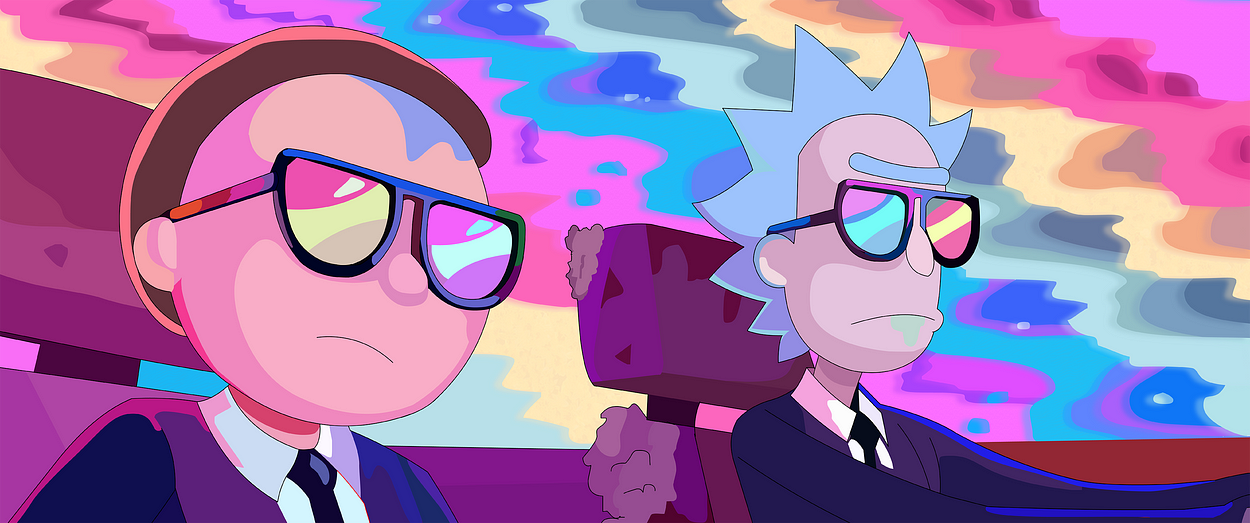
We’ll also be counting other people’s money again and making grandiose plans to conquer the world.
Third-Party Bundles
We’re going to discuss several formats now, including third-party bundling and Steam Bundles. People who are unfamiliar with the bundle distribution format see it like this:
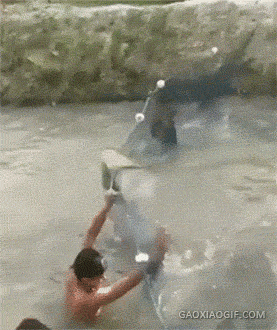
The reality? Nine to twelve months after your game’s release, you’ve sold most of your copies on Steam. Now it’s time to bundle. The format is simple: you sell a lot of copies at wholesale prices or get a fixed bonus for participating. There are many companies that offer bundles.
I’m sure you’ve seen or heard about bundles from stores such as Humble Bundle, G2A, IndieGala, Green Man Gaming, GamersGate, Fanatical, and Gamivo. In 2018 practically all large (and many medium-sized) third-party platforms use this format in one way or another, and it works according to a uniform set of rules.
Keep in mind that all the unused keys you generate for bundles will very likely be resold, which basically puts an end to your organic sales. Keep in mind that third-party bundles should only be used after you’ve burned through all of your organic sales and discounts.
Below you can see the unsuccessful experience of a studio that put its game in HB bundles three months after release. As you can see, they essentially buried their own game.
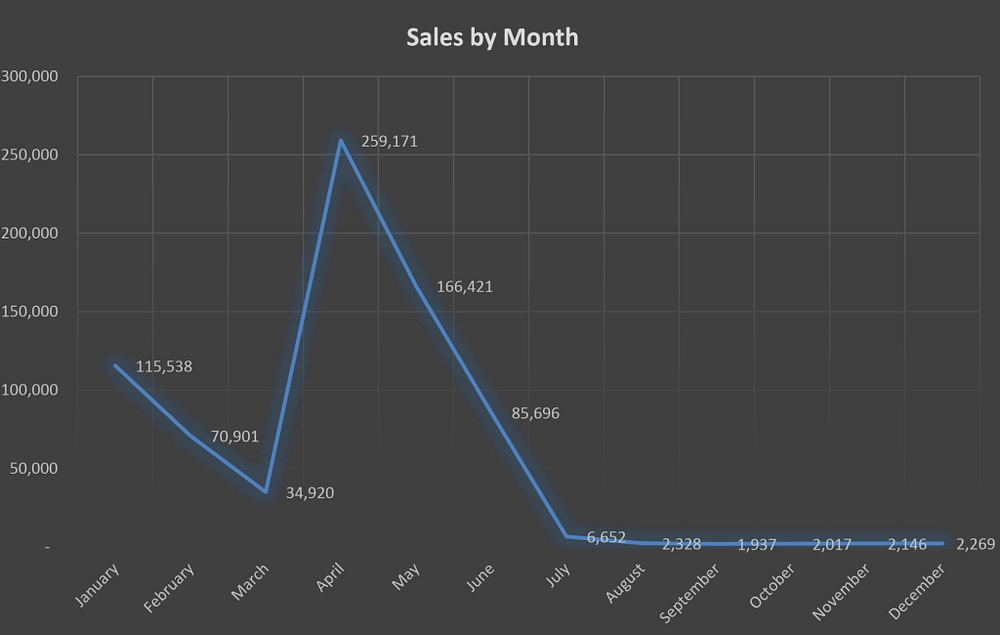
Anyway, these stores pay you a flat fee for every key included in a bundle. The rate is about $0.25–0.35 per key for B-class games, $0.70–1.20 for BB or A games, and $2-$4 for AAA games. Bundle size is often in the 5,000–30,000 range, or $2,000-–10,000 for B-class games. Of course, prices may vary (a lot) and directly depend on your negotiation skills.
What advantages do bundles offer—aside from money, that is? For one thing, having plenty of activated keys and copies installed on Steam will raise your organic traffic. You’ll get more reviews (they don’t affect the ranking) that friends of players see through notifications on Steam’s social network. The number of installations increases, and this affects the “Similar Products” section.
When it comes to the bundle format, Humble Bundle (HB) is perhaps the most recognized platform among developers. News about this store is usually accompanied by the sarcastic designation of “humble lose bundle.” In the last year and a half HB has stopped focusing on having 1–2 relatively fresh AAA games per bundle. And there’s nothing strange about this—since 2015 the company has been actively promoting a subscription service ($12 a month) that gives players access to a brand new selection of good games every month, including one AAA game.
Between 2010 and December 2013 HB launched 70 bundles, and in 2014 it started actively promoting books and music. They’ve released more than 650 bundles to date. If you’re not familiar with The Humble Visualizations, go check it out right now (2011–2016).
File this one under “for what it’s worth”: I know developers whose games were in four bundles in 2017 and two in 2018. All are decent indie games that launched between 2016 and 2017. The average participation bonus was $14,000. The average number of copies sold was around 25,000.
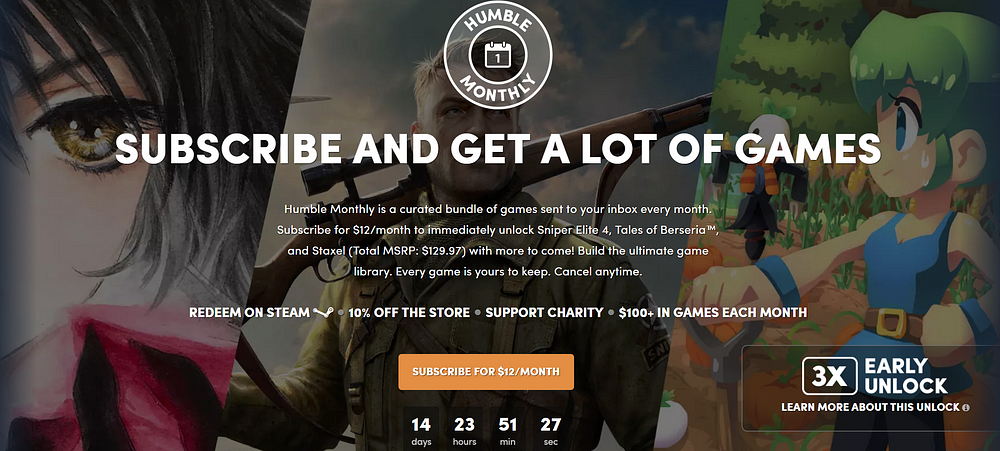
How does an HB subscription work? You contact their manager, and if your game meets their quality requirements or the format of a sale, you’re in. Humble offers a fixed amount for adding your game to its subscription service regardless of how many people actually get the game. As of early 2018 the number of subscribers exceeded 200,000, and, judging by current trends, it will double in 2019.
At the beginning of the year the subscription bonus for BB and A-class games totaled about $10,000–90,000 ($0.05–0.45 per copy) depending on the game’s quality and Humble Bundle’s internal evaluation policy, which is based on the number of copies sold, the number and quality of reviews on Steam, and guesswork.
Steam Bundles
This tool is pretty simple: you take your games and DLC packs and sell them as a bundle. These come in two varieties: bundles that allow players to purchase the items they don’t have yet (“complete the set”), and bundles that don’t (“must purchase together”). You need the latter if you want to make a Special Edition of your game.

In the first article we talked about discounts and the fact that Weeklong Deals and your own discounts have one unpleasant limitation: you can only run them once every 60 days. This is where bundles come in. Let’s talk about bundles that consist of several games, including games from different developers.
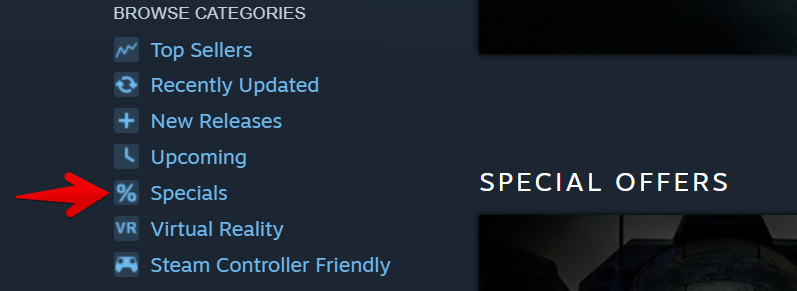
These bundles are displayed in the “Specials” section, and they have a separate automatic feature option on Steam. This format has one crucial difference from individual game sales: bundles with multiple games are not subject to any restrictions on changing the discount. You can change it every five minutes if you want to. You can even sell your game as part of several different bundles simultaneously.

With this format you’ll feel almost as good about Steam and its restrictions on price changing and discounts as the guy above. Carefully selecting bundles allows you to increase your sales and use the time between discount windows efficiently.
It’s a tool that every decent game publisher uses. It’s great for making proper sets that include your own games and those of your partners.
This is also a good reason to make friends. If you’ve embarked on the path of self-publishing, look for other guys from the “desperate club” and try to negotiate joint bundles with them.
You Are Not Alone
You are not alone—this is an important point that, strangely enough, many people forget or don’t even seriously consider. If you’re developing a game on Unreal or Unity, remember that the companies behind those engines have more to offer than prizes at industry conferences and exhibitions.

Epic supports developers with grants (Unreal Dev Grants, $5,000–50,000). Xsolla has an investment fund for developers called Xsolla Capital. Mail.Ru has a special division called Mail.Ru Games Ventures and invests in game developers and projects. Wargaming.net and LVP have created an investment fund for game developers. The Dutch publisher Good Shepherd raises capital for game projects. Nvidia offers support, training, and even PR through the Indie Spotlight Program. The same services (minus the PR) can also be obtained from AMD.
You can get support from Epic, Nvidia, and Radeon engineers if the game you’re making is interesting or uses advanced engine and hardware capabilities. They can help you optimize your game, deal with a complex render, or solve those trivial little problems that you just can’t figure out.
Hardware vendors such as Nvidia and AMD have their own support format for developers called “Featured Games.” These companies and engineers are quite active and open. You should get to know them. They can help you.




































